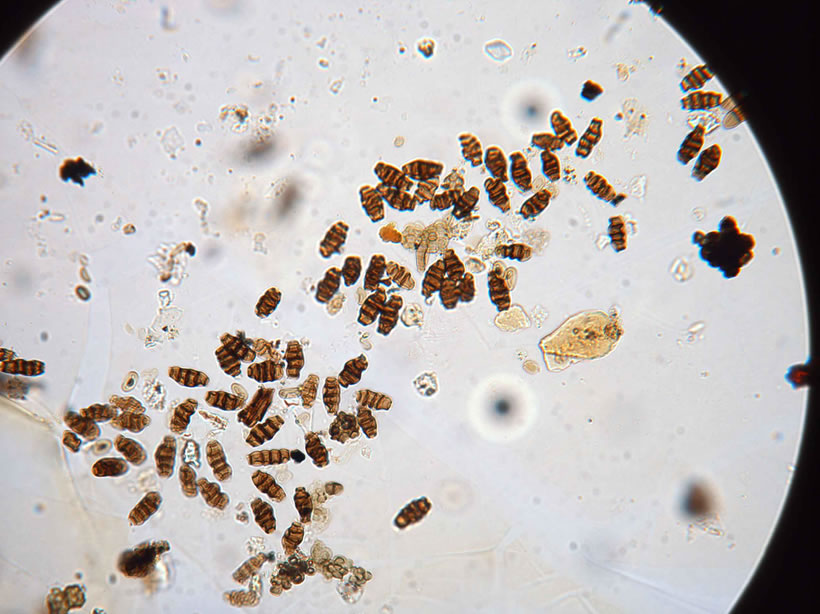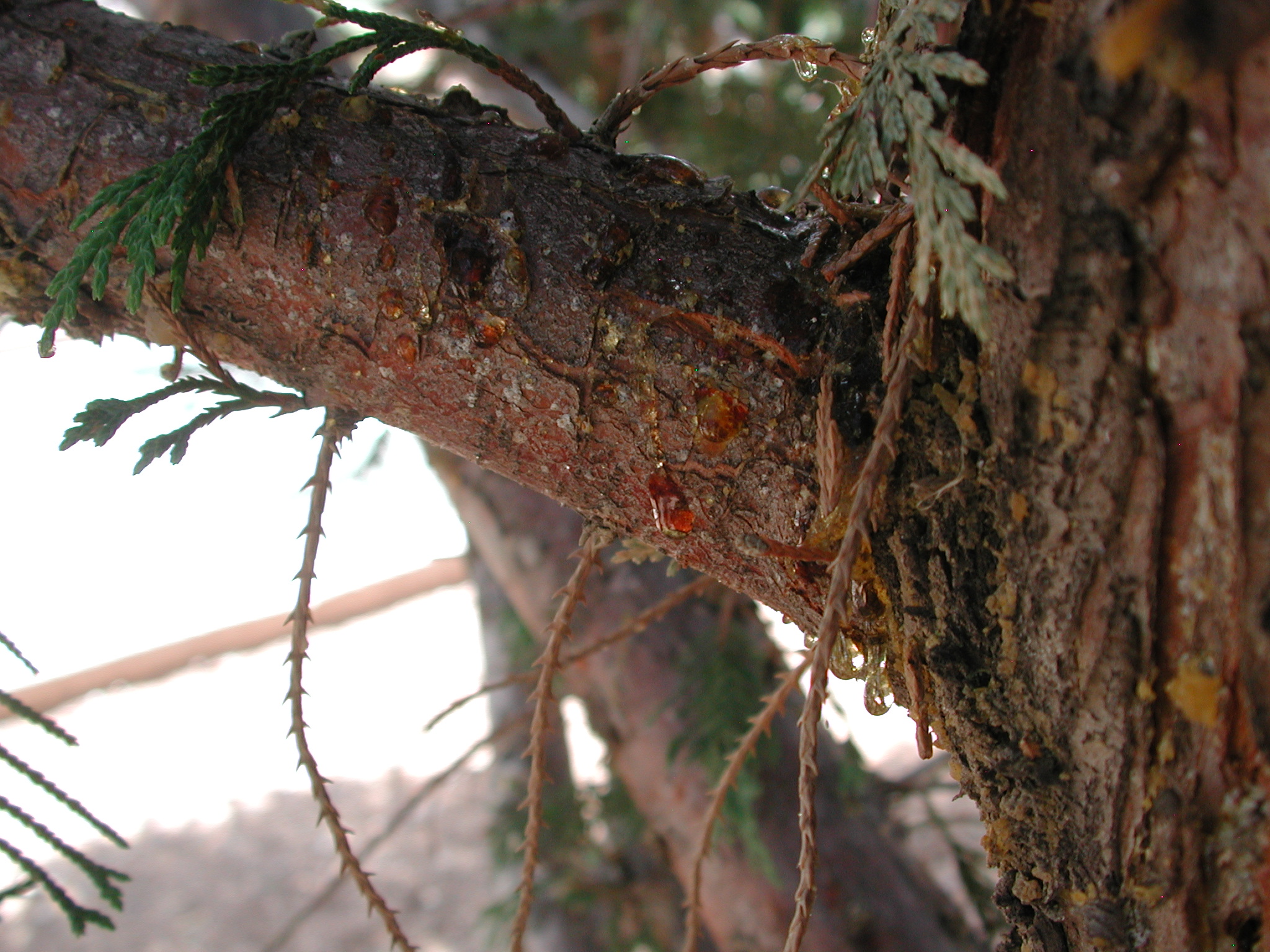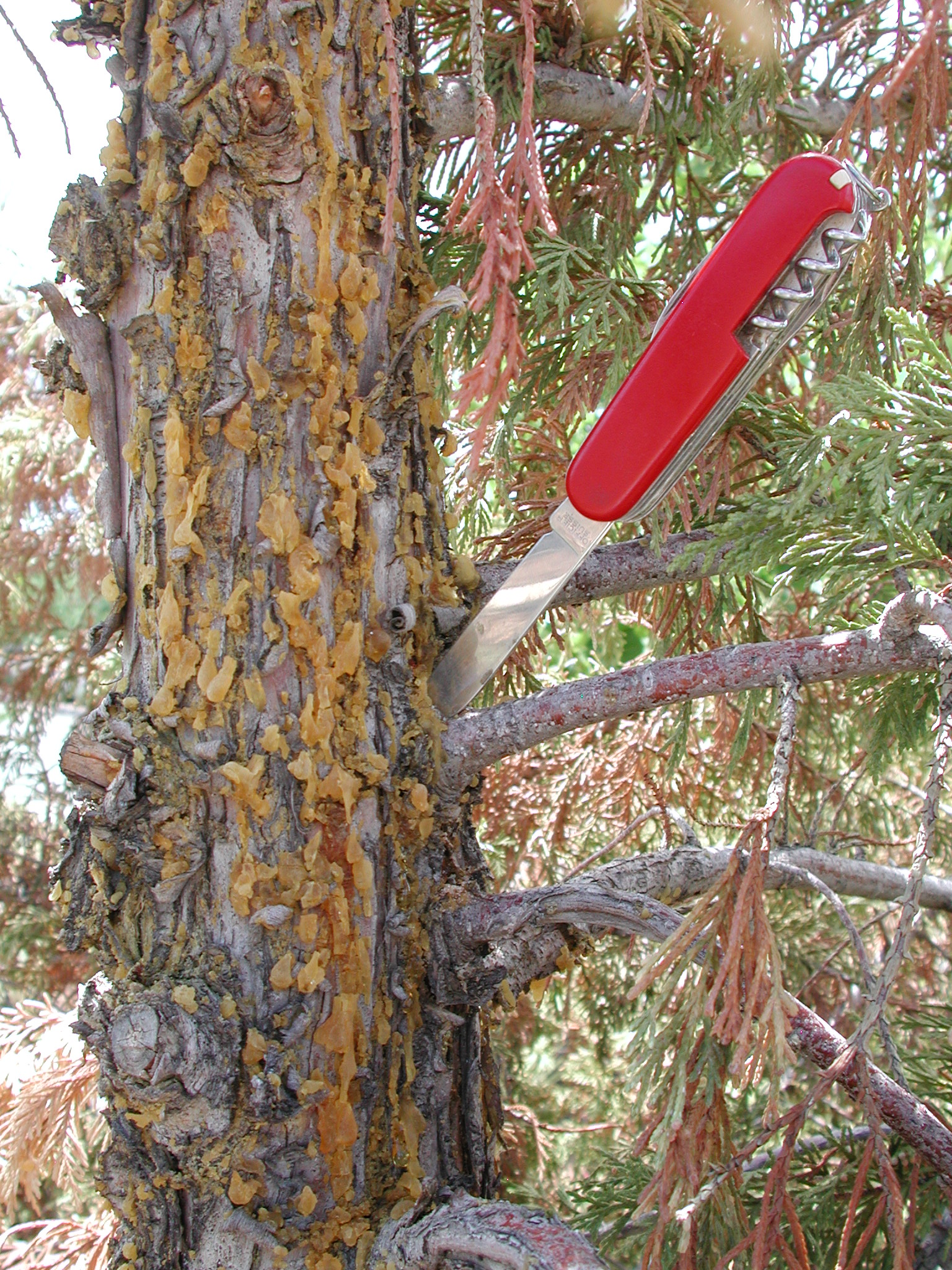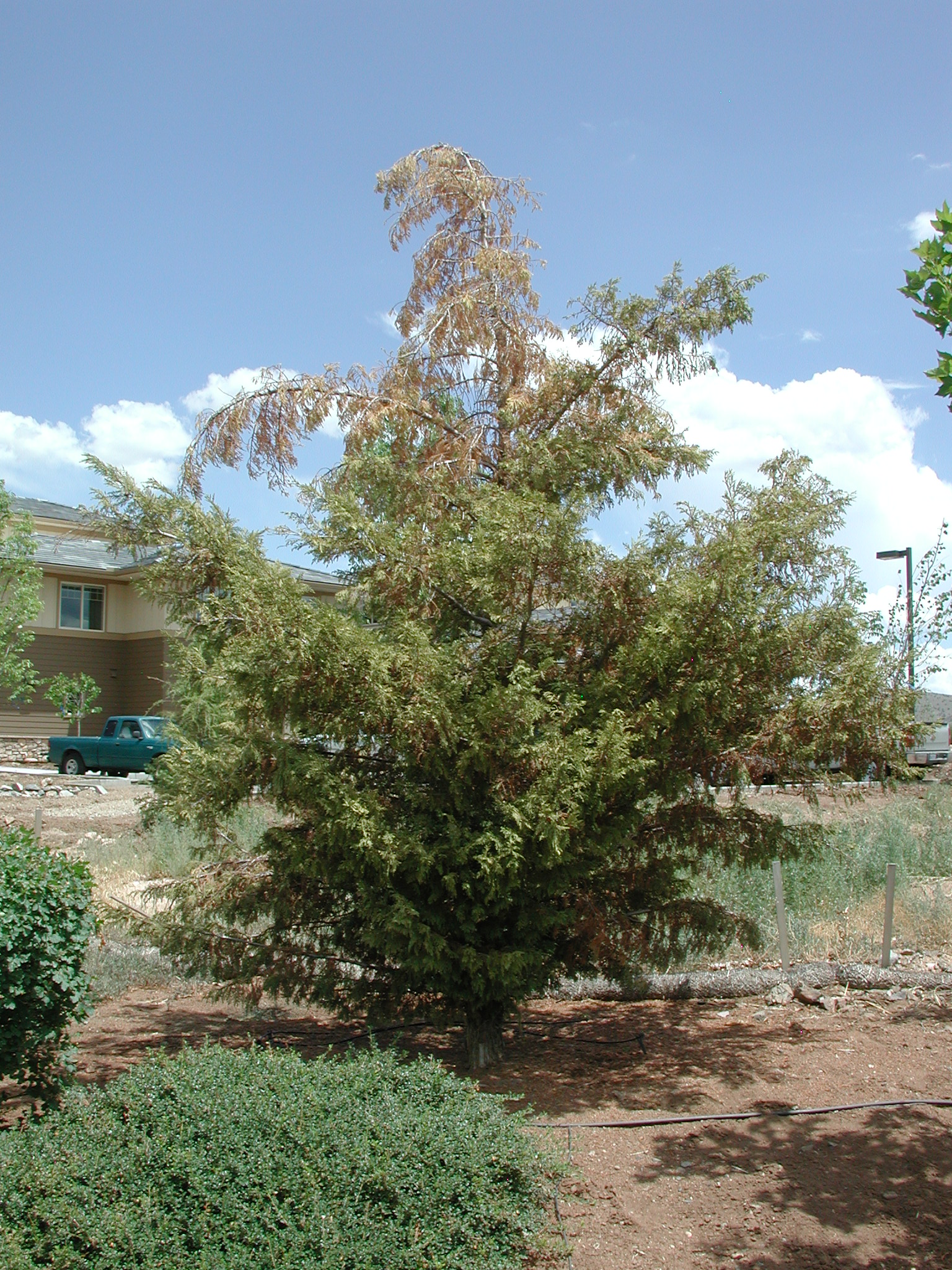 Seiridium Canker of Leyland Cypress - May 16, 2018 Jeff Schalau, Agent, Agriculture & Natural Resources University of Arizona Cooperative Extension, Yavapai County Leyland cypress (Cupressocyparis leylandii) is an interspecific hybrid between Monterey cypress and Nootka cypress that was first discovered in England in 1888. When Leyland cypress first came to our area, we thought it was the perfect tree: an evergreen with dark green foliage and a moderately fast growth rate. In recent years, we began to see branch dieback and tree decline on Leyland cypress in the Sedona and Prescott areas. A fungal disease, Seiridium canker, was confirmed in the summer of 2011. Now that we know the pathogen occurs here, we have to consider the risk to the thousands of Leyland cypresses that have been planted and more importantly, why these trees should not be sold or recommended for future planting. Seiridium cardinale is the predominant disease pathogen found in California. Two other species of Seiridium are also present in North America (S. cupressi is found in Florida and S. unicorne is found in the southeastern U.S.). We have not yet identified the species of Seiridium in our samples, but it is likely S. cardinale. Seiridium also infects Italian cypress and has had widespread impacts in the Mediterranean region. The pathogen is identified by sampling areas where cankers (sunken, cracked areas on stems) are visible. Here, fruiting bodies (pycnidia) emerge from the canker and produce fruiting structures called conidia. The conidia are asexual reproductive spores which have a distinct appearance when viewed under a compound microscope making them a diagnostic tool for the disease (photos of symptoms and conidia found in Prescott are included below). The symptoms of Seiridium canker most often appear as “flagging”: individual branches fading from green to yellow to brown due to girdling cankers on or at the base of branches. Infection may affect a single branch or multiple branches throughout the tree and mortality of the entire tree is common a couple of years after the initial infection. The scientific literature often shows oval cankers that are sunken and reddish with resin exuding from the margins, especially on new, rapidly expanding cankers. While local symptoms were similar, the cankers we observe on Leyland cypress in Yavapai County do not have the same appearance as those found in the scientific literature. The cankers were less distinct and rarely appeared sunken or wet. In addition, infected trees in our area often ooze yellow sap from large areas on the trunk. This initially led to speculation that the damage observed may have been from environmental stresses such as improper irrigation (too little and poor placement), poor planting/staking, and overly dense plantings. Indeed, these cultural factors could increase Leyland cypress’ susceptibility to Seiridium canker. The disease infection cycle can begin with wounds made by insects, hail, snow breakage, or mechanical injury. Nursery stock can also be infected. Once infected, the fungus overwinters in colonized bark and old cankers during winter and dry weather. The fruiting bodies and spores are produced during wet weather. Management options for Seiridium canker are ineffective. Individual high-value trees may be treated with fungicides and pruning out individual infected branches might prolong survival of susceptible trees. However, planting resistant species is the only realistic and sustainable option for long-term disease control. If you have Leyland cypress and they are not showing symptoms of Seiridium canker, then reducing plant stress factors such as maintaining adequate irrigation and giving them adequate growing space will increase plant vigor and potentially allow them to survive for a few more years. Sanitizing pruning tools with isopropyl alcohol between cuts could minimize spread of this disease. Ultimately, all Leyland cypress trees in our area become infected and die before they are 15-20 years old. I do not encourage any future planting of Leyland cypress in the mid-elevations of Arizona. If symptoms are present, prompt removal is recommended as it may slow the spread of infection to susceptible trees nearby. Italian cypress (Cupressus sempervirens) is also susceptible but seems to survive. It is thought that Arizona cypress (Cupressus arizonica) and juniper trees (Juniperus spp.) are less susceptible to Seiridium canker and would be suitable substitutes for Leyland cypress in residential and commercial landscapes. To date, I have not detected Seiridium canker on Arizona cypress or any juniper species. I have also authored a publication on Seiridium canker which can be accessed from the University of Arizona Cooperative Extension (and with the online edition – see URL below). In 2011, I also sent all known Yavapai County nurseries a letter informing them of the widespread presence of Seiridium canker and recommending they not sell Leyland cypress in the future. Follow the Backyard Gardener on Twitter – use the link on the BYG website. If you have other gardening questions, call the Master Gardener help line in the Camp Verde office at 928-554-8992 or e-mail us at verdevalleymg@gmail.com and be sure to include your name, address and phone number. Find past Backyard Gardener columns or provide feedback at the Backyard Gardener web site: http://cals.arizona.edu/yavapai/anr/hort/byg/. Photos  Seiridium conidia (photo by Steve Koike).  Seiridium canker on branch of Leyland cypress (photo by Jeff Schalau).  Sap exuding from trunk on Seiridium canker infected tree (photo by Jeff Schalau).  Young Leyland cypress tree infected with Seridium canker (photo by Jeff Schalau). Additional Resources Seiridium Canker of Cypress Trees in Arizona University of Arizona Cooperative Extension extension.arizona.edu/sites/extension.arizona.edu/files/pubs/az1557.pdf |